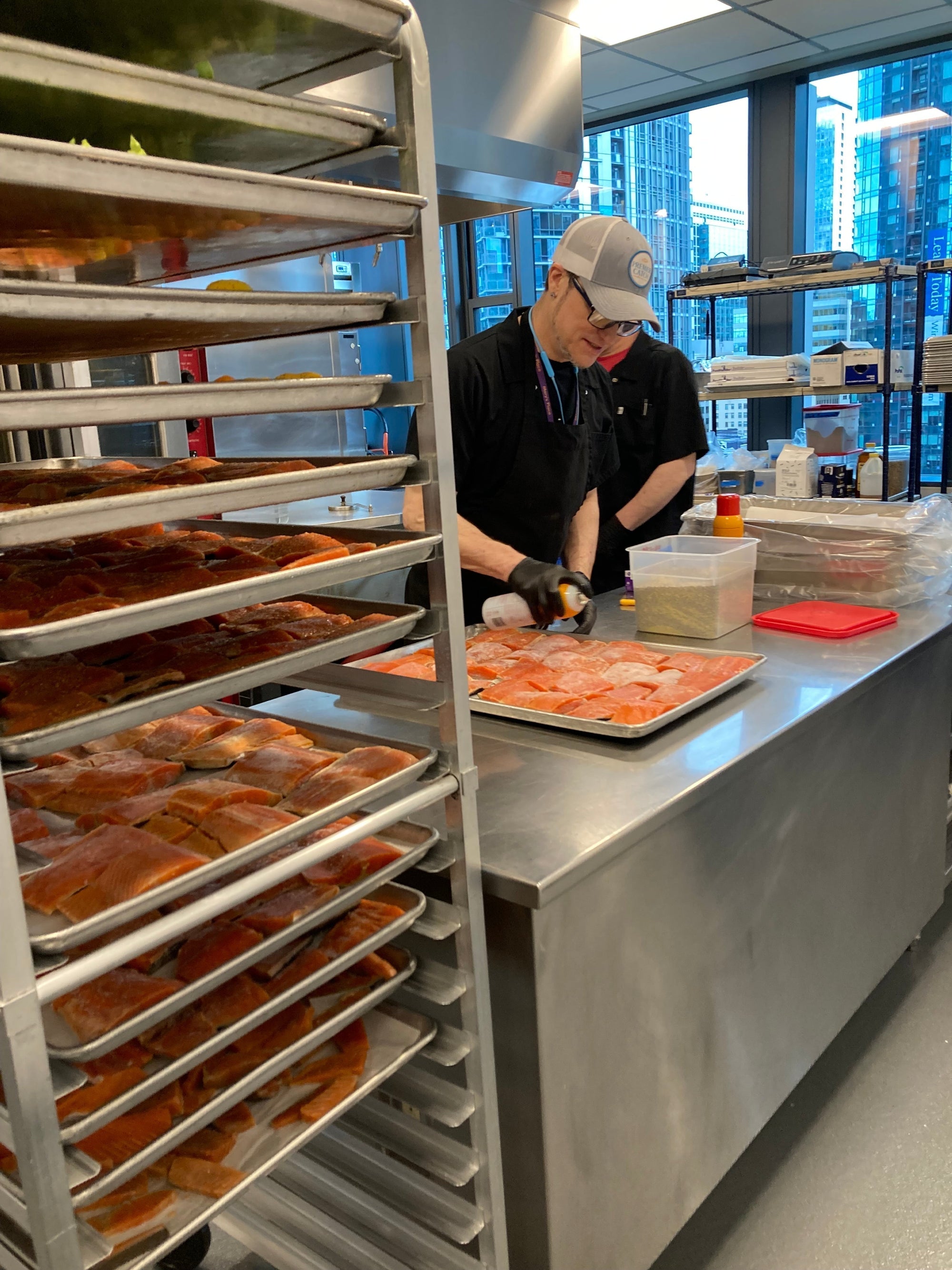Every October, we celebrate National Seafood Month and the wide variety of local sustainable seafood species that provide us with delicious, nutritious meals. While this month often focuses on taste, culinary innovation, and the health benefits of seafood, there's another essential aspect that needs attention – the environmental implications of seafood consumption. From the vastness of the oceans to the seafood on our plates, the journey is intricate and can have a considerable impact on the planet, if the food systems and habitats are not respected.
The Oceans and Their Ecosystems:
The ocean, covering about 71% of the Earth's surface, plays a vital role in regulating our planet's climate and supports an incredible diversity of life. Coral reefs, mangroves, and seagrass beds act as essential habitats for various marine species, providing them with food and shelter. Within the world of seafood, there are various challenges around the world such as overfishing, habitat destruction, and marine pollution, which jeopardize the delicate balance of our ocean’s ecosystems. Here at Premier Catch we take a considerable amount of time and resources to support sustainable fishing practices and stay up to date with the current events surrounding our amazing oceans. We support the scientific community in their stock assessments and even in closures like we’ve recently seen with the Alaskan Red King Crab fishery. Respecting the science and research is essential to actually walking the walk and not just talking the talk when it comes to being a sustainable seafood company.
Overfishing:
One of the most pressing environmental impacts of our seafood consumption habits is overfishing. Overfishing refers to the removal of a species of fish from a body of water at a rate that the species cannot replenish, leading to population decline. This can have severe implications, not only for the targeted species but also for those that rely on them as part of the food chain. In Alaska, overfishing isn’t a major concern due to the tight protections we have in place in our local waters, but around other parts of the world - this issue is significant.
Due to consumer demand, many popular fish species have seen drastic declines in their numbers. If these trends continue, we may find a day when our favorite seafood species are no longer available, and more importantly, entire ecosystems could collapse. Be aware of popular overfished species such as Atlantic Salmon, Atlantic Halibut, Atlantic Sea Scallops and Chilean Sea Bass. Easy sustainable swaps for these are Wild Alaskan Salmon (all species), Pacific Halibut, Wild Alaska Weathervane Scallops, and Wild Sablefish.
Habitat Destruction:
Unsustainable fishing practices, such as bottom trawling, are causing significant damage, including the destruction of coral reefs and seagrass beds, further endangering the species that rely on these habitats. There are several different trawling methods, some of which don’t cause as much disturbance (such as otter trawling) but a big one we like to avoid is hydraulic dredging, which uses water to loosen the seabed and collect animals that live in the sediment. This can remove up to 41% of the biota per fishing pass.
Marine Pollution:
Another overlooked aspect of seafood production is marine pollution. Fishing gear like nets and lines often gets discarded or lost in the ocean, leading to what's known as 'ghost fishing.' This term describes the phenomenon where the abandoned gear continues to trap marine life. In Alaska, their shorelines have the largest concentration of marine debris in the country — most of which comes from elsewhere. Thanks to a combination of ocean currents and increasingly devastating natural disasters, marine debris from around the world piles up on Alaska’s shores. For more information on an incredible group cleaning up Alaska’s shorelines, check out the Gulf of Alaska Keeper (GoAK) project.
Additionally, pollution from runoff, containing pesticides and fertilizers, finds its way into the oceans, leading to dead zones where very little life can thrive.
The Silver Lining: Sustainable Seafood Choices
Fortunately, sustainable seafood gives us hope for the future of our oceans, species, and fishing communities. Which is why, at Premier Catch, we solely source readily available species from sustainable fisheries in Alaska and the Pacific Northwest.
We are deeply dedicated to supporting sustainable seafood and do so through collaborations with conservation organizations such as Ocean Wise, Monterey Bay Aquariums’ Seafood Watch, the Marine Stewardship Council, and FishChoice and work closely with our suppliers and producers to obtain credible certifications in order to manage traceability.
To promote a healthy planet, we also donate and support many environmental organizations throughout the world including The World Wildlife Fund, The Monterey Bay Aquarium, Ocean Wise, The Seafood Nutrition Partnership and the Whale Museum.
So as we celebrate National Seafood Month, it's crucial to look beyond the plate. While enjoying the delicious dishes seafood offers, it's essential to be conscious of our choices and their broader implications. By understanding and acting upon the environmental impacts of seafood, we can ensure that our oceans remain bountiful, not just for our generation but for generations to come.


